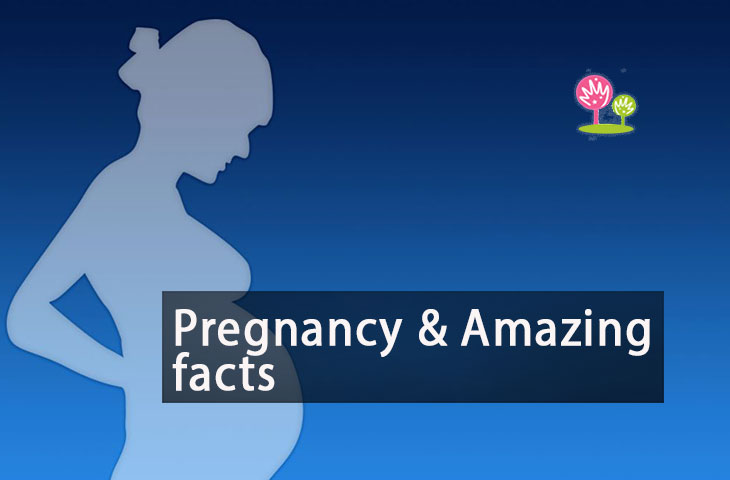Pregnancy & Some Amazing facts

The time during which one or more offspring develop inside a woman is pregnancy, also known as gestation. More than one child, such as twins, is involved in a multiple pregnancy. Pregnancy normally happens by sex, but may also occur by assisted reproductive techniques. Pregnancy can conclude with live birth, spontaneous abortion, or stillbornness. Childbirth usually takes place about 40 weeks after the beginning of the final period (LMP). It is only 9 months old, with an average monthly age of 31 days. This is just over. It’s roughly 38 weeks when you use fertilisation age. The first eight weeks after fertilisation, after which the word foetus is used until birth, include an embryo (ten weeks gestation) that is developing offspring.
Early pregnancy signs and signs include include missed periods, sensitive breasts, morning sickness, hunger, and frequent urine. Pregnancy with a pregnancy test may be confirmed. Pregnancy lasts approx. three months each, and is separated into three halves. The first trimester is based on a conception of egg fertilisation by the sperm. Afterwards, the fertilised egg flows via the Fallopian tube and fits in the uterus, and starts forming the embryo and placenta. The risk of error (natural death of the embryo or foetus) is at its peak in the first quarter. The movement of the foetus can be felt towards the middle of the second trimester.
Over 90% of babies given high-quality medical treatment can live outside their uteruses at 28 weeks, but kids who are delivered at this time are likely to face major health concerns such as heart and breathing abnormalities and long-term mental and developmental disorders. Prenatal care enhances the outcomes of pregnancy. Prenatal care may include extra folic acid, medications, smoking, alcohol, regular exercise, blood testing and regular physical exams. Pregnancy complications include include high blood pressure issues, gestational diabetes, iron deficiency anaemia, and serious nausea and vomiting.
The optimal birth work starts alone when a lady “period.” The preterm and increased risk of medical complications, such as cerebral paralysis, are babies who are born before 37 weeks. Babies born in the period from weeks 37 to 39 are regarded to be early term, whereas babies born in the period from weeks 39 to 41 are considered to be full term.The “late term” is considered for children who are born between 41 and 42 weeks while they are considered “post-term” after 42 weeks. Unless other medical reasons requires delivery before 39 weeks via labour induction or caesarean section.
Amazing facts about pregnancy
- Pregnancy was 375 days the longest recorded. A woman called Beula Hunter bore birth almost hundred days after an usual 280-day pregnancy, according to a 1945 Time Magazine article.
- One of the shortest pregnancies known in which the child lived was only 22 weeks. But the infant has survived several problems. A younger baby, who was born 21 weeks and four days ago, is now a kid.
- During pregnancy, the body’s blood volume increases from 40 to 50%. This increase helps to provide additional oxygen to support a healthy pregnancy.
- During pregnancy, the uterus can grow considerably. It’s about the size of an orange during the first quarter. It expands to the size of a watermelon by the third quarter.
- Breast milk can begin to be produced only 14 weeks before your pregnancy.
- During pregnancy, your voice may change. This is because your vocal folds can thicken due of hormonal fluctuations. After delivery or breastfeeding, it will most likely return to normal.
- A developing kid may distinguish the voice of her mother from the womb by the third trimester.
- Approximately 1 in every 2,000 teeth is born. These teeth are loose and need to be removed by a physician. During breastfeeding they can be painful for the mother. It can also be harmful – it can be dislodged and inhaled.
- Turkey has the highest percentage (50.4 per 100 live births), with Iceland the lowest rate of infants born via caesarean section (15.2 per 100 live births).
- Out of every 1,000, around 32 people are a twin. In the United States, Connecticut, Massachusetts and New Jersey are the state with the highest twins. The lowest is New Mexico.
- A couple of people at the age of 30 are approximately 20 percent monthly. The chance is approximately 5 percent a month by the age of 40.
- In the womb, children can cry. Starting at 28 weeks, researchers discovered indications of discontent with ultrasounds.
- In the US, teenage pregnancy rates (aged 15-19) are declining. Over 229,000 teenage births were place in 2015. That’s 8% lower than in 2014.
















